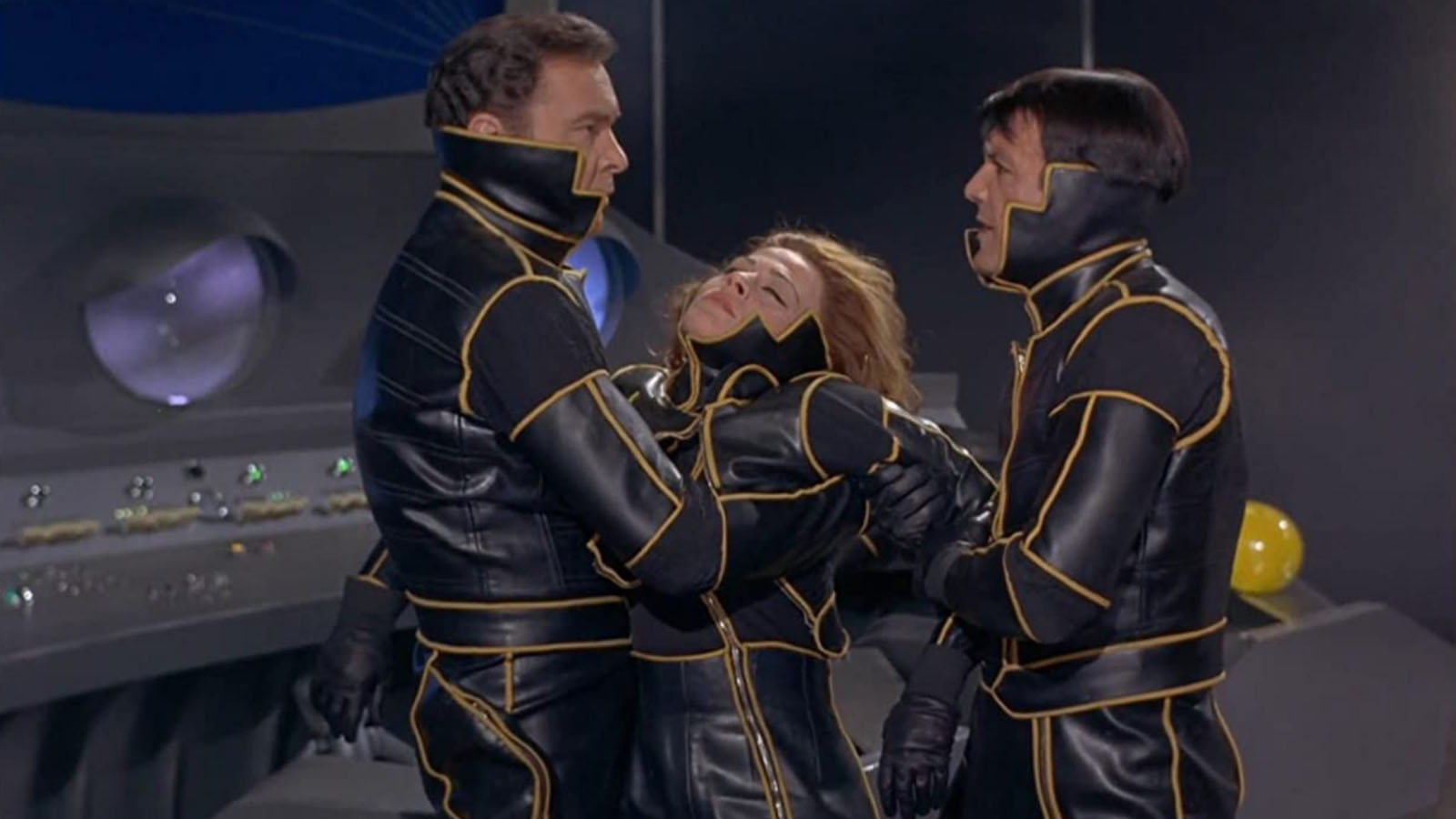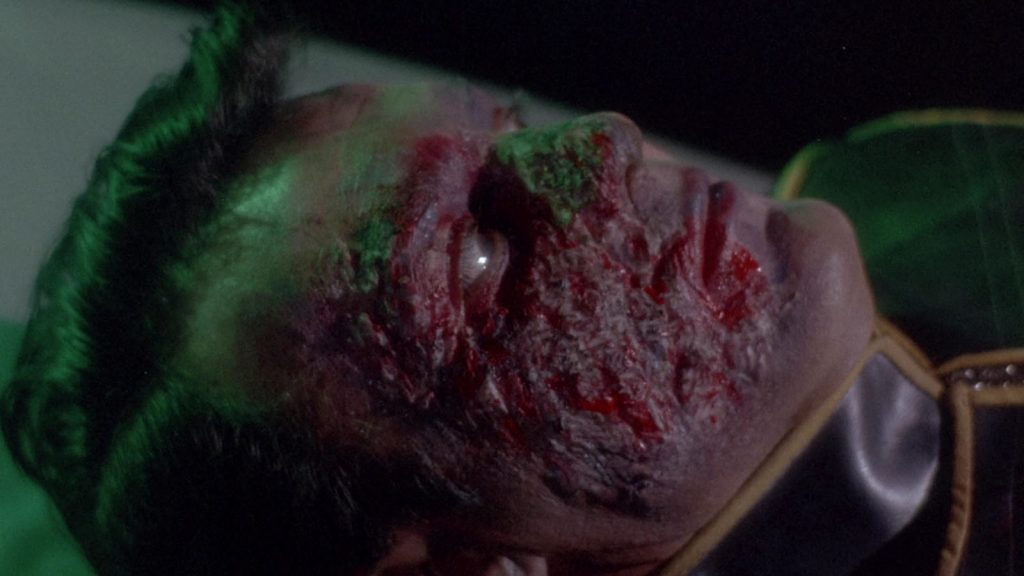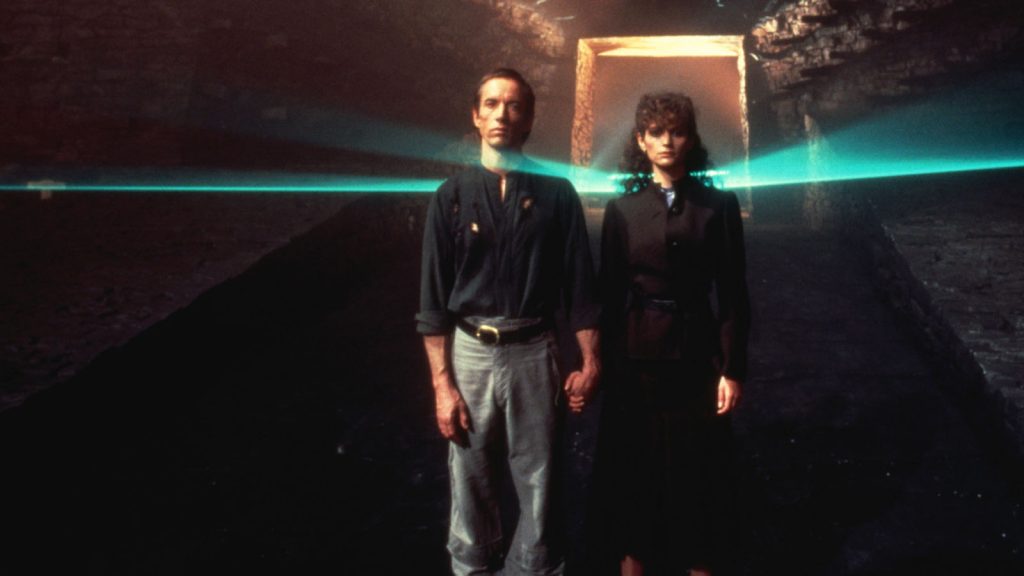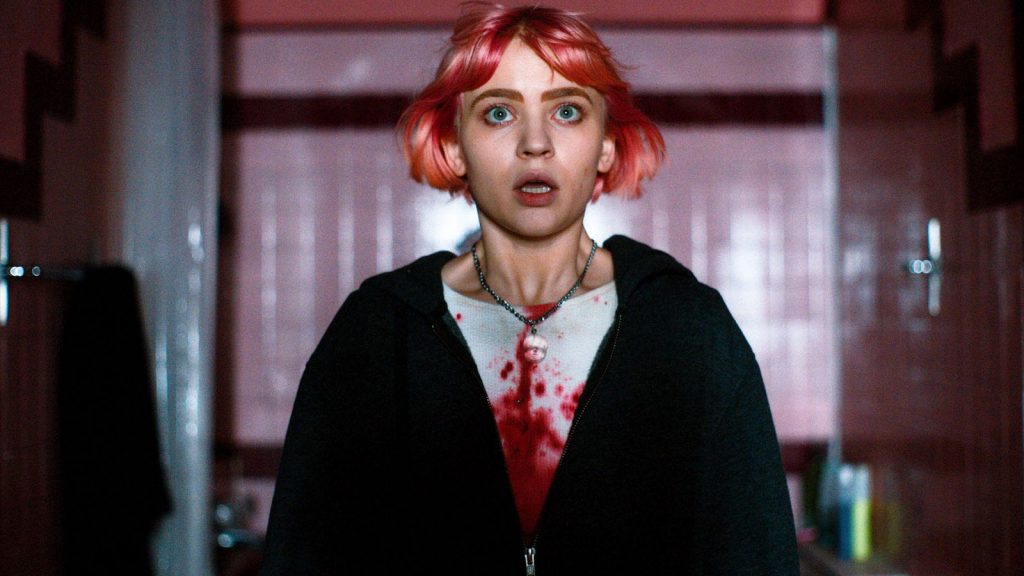
Planet of the Vampires is a film you haven’t seen at all if you haven’t seen it in the wee hours, with the lights off, and its hypnotic sound turned way up. This is Italian director Mario Bava’s Gothic haunted-house story set in outer space, featuring the same glorious color photography that distinguishes his earlier films Black Sabbath (1963) and Blood and Black Lace (1964). It’s an anxious dream of a film that honors its original Italian title Terrore nello spazio (“Terror in Space”) more than the English title that American International Pictures saddled it with upon its B-movie release in 1965. There are no vampires, but there are mind invaders, reanimated corpses, and long-dead aliens of unknowable origin.
Plot watchers are in for a bumpy ride, but here it is: two spaceships, the Argos and the Galliot, respond to a distress signal coming from uncharted planet Aura. While landing, the Argos crew are possessed by the locals—a race of disembodied beings looking to leave their dying home—and they begin to attack each other. Mark (Barry Sullivan), captain of the Argos, knocks sense back into everyone with some face-slapping, but the Galliot isn’t so lucky. The second ship’s crew is now a pile of bodies for Mark and communications officer Sanya (Norma Bengell) to discover, and it isn’t long before the corpses are up and walking. The sequence of events is puzzling. Scene transitions are missing, recycled sets make it hard to locate the action, and characters are often indistinguishable. Bava doesn’t help the situation by putting his space explorers in identical tight black leather uniforms with yellow piping. (Though he does one-up those black leather gloves, a hallmark of his giallo crime films.) It’s all so stylistically ravishing that you cease to care about continuity. And the spatiotemporal confusion arguably heightens the feeling of being trapped in a nightmare.
Bava summons Gothic sublime on a shoestring AIP budget. In one particular shot, a gunmetal ship perches above an inferno of mist and jagged mountains, as characters pick their way through the marsh below. It’s an image as haunting as the illustrations Barbara Remington drew for the covers of Tolkien’s Lord of the Rings paperbacks (released by Ballantine that same year). Using miniatures, smoke, and all the shades of blue and red, Bava composes the kind of painterly shot that ruins a person for today’s soulless CGI landscapes. The sound design, recalling that other invisible-monster movie Forbidden Planet (1956), deepens the Gothic trance with howling winds layered beneath surging electronic drones. Characters, under alien influence and otherwise, wade through the hellscape like sleepwalkers, looking lost, fearful, and bewildered.
Many will watch Planet of the Vampires out of historical interest. Yes, it may have influenced Alien: there is the distress signal, the ship like a horseshoe, and the derelict spacecraft with a gargantuan pilot. But this is a distinct viewing experience. The artistic abstraction of Bava’s world transforms a half-baked story into one of those dreams that feels like a slow-motion failure. Nothing the characters do or know seems to matter: the alien possessions beset them quickly, without rhyme or reason. The general atmosphere of paranoia, powerlessness, and inevitable capitulation is more akin to the mood in John Carpenter’s The Thing (1982) than to that in Ridley Scott’s work. If anything, Bava’s film plays like the colorful and confusing dream Ellen Ripley might have had, nodding off by the ship’s hatch, waiting for the monster to come in.

a writer living outside Philadelphia, is currently working on a horror project set in western Pennsylvania. He co-wrote the movie Anamorph, starring Willem Dafoe.
Mario Bava was a living embodiment of Italian genre cinema, working credited and uncredited on nearly a hundred films. He was a cinematographer, a special-effects artist, and a gifted visual stylist. He shot and, by some accounts, ghost-directed much of...
BY LAURA WYNNE | April 5, 2024
The horrible miracle of John Carpenter’s The Thing is that it manages to absolutely terrify the viewer while also being patently, grotesquely absurd. A commonly held belief about horror cinema is “the less shown the better”—the notion that off-screen space possesses the imagination...
BY MICHAEL KORESKY | October 31, 2021
Horror stories know something that other stories don’t. William S. Burroughs named his book Naked Lunch after that “frozen moment when everyone sees what is on the end of every fork.”
BY TOM PHELAN | March 17, 2022

This pre-Code offering packs a lot of story into its typically brisk running time, with several plot threads weaving together a (not always successful) tapestry of spooky and criminal doings.
READ MORE >
BY ANN OLSSON | Month 00, 2021

In what could be the fastest-resulting rape revenge movie, a drunken lout brutally forces himself on Ida, the young woman who doesn't return his affections, during a party over Labor Day.
READ MORE >
BY LAURA KERN | Month 00, 2021

Beast is a lot of movies in one package - fractured fairy tale, belated-coming-of-age story, psychological drama, regional horror film - but above all it's a calling card for its leading lady, Jessie Buckley.
READ MORE >
BY LAURA KERN | Month 00, 2021